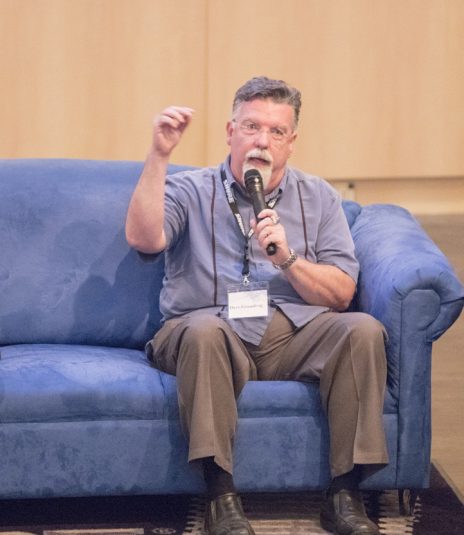Veteran A1 Dave Grundtvig Looks Ahead to NFL Wireless in the Repack Era
Spectrum reallocation will mean more-careful use of RF at games
Story Highlights
Dave Grundtvig has mixed audio as the A1 for almost the entire Chicago-area sports menagerie: the Bulls, the Bears, the Blackhawks. But, like many who talked a few weeks ago about impending Hurricane Irma as “the big one,” Grundtvig speaks in similar terms about how the current repack of RF spectrum will impact broadcasting for the new football season.
“The first one didn’t really affect us all that much,” he says of the 700 MHz reallocation in 2008. “The repack of the 600 MHz range is going to have a much bigger impact on us.”
Grundtvig says conversations with game-day frequency coordinators indicate that they are taking a considerably more stringent approach to allocating spectrum at games. He cites as an example the field reporter or announcer working a pregame show with a desk on or near the field of play, ground zero for wireless in sports broadcasting.
“You might have asked for a channel for that [reporter’s] wireless microphone, and, before, you would have gotten it,” he explains. “Now they’re going to need to use those frequencies for other things, so you’re going to have to use a wired microphone.”
Grundtvig expects that kind of spectral triage to be played out across the league and beyond this year. “The NFL’s priorities around wireless are going to change. They have to, because there’s just not as much bandwidth as there once was,” he says. “If you’re standing just a few feet from a camera or a studio set in field locations, they’re just not going to be giving you the frequencies they used to.”
Ironically, Grundtvig’s observations were spoken during a visit to Soldier’s Field, home of the NFL Chicago Bears, as part of a demonstration of Shure’s Axient Digital wireless microphone system. Chicago-area–based Shure was showing the Axient Digital’s capabilities, such as the ability to combine two discrete RF signals per receiver channel, using a quality-based maximal-ratio-combining algorithm, resulting in true digital diversity.
The Quadversity feature, which by assigning four antenna inputs to a single channel can provide extended coverage and the option for separate zones, plus added resistance against multipath interference and RF noise; and a robust high-density transmission mode that increases system channel count up to 47 active channels per 6-MHz TV band (63 channels/8 MHz). One part of the demo saw the system reach more than 220 yards across the field, from one of the field entrance tunnels to the upper reaches of the seating area.
“[Event production] wants to use more wireless microphones than ever, at a time when there’s less spectrum than ever,” explains Michael Johns, product manager, Shure. “That’s compounded by environmental factors, like very crowded RF locations, such as Chicago or New York. That’s the environment we developed Axient Digital for.”
Grundtvig views such features as ways to address the tightening of the spectrum landscape. “It’s a technical solution that can increase the number of channels available to us during shows.”
Using wired microphones for some additional applications, like announcers close to a desk on the field, isn’t the worst thing that could occur, he says. However, he notes how many more wireless applications there are in sports broadcasting now, from additional parabolic collectors on the sidelines to more athletes being wired for sound, as well as more novel applications: lavalier microphones buried in the outfield for baseball, placed in golf cups, woven into volleyball nets.
“The miniaturization of microphones opens up so many new possibilities,” he says. “It’s just ironic that it comes at a time when there will be fewer channels of RF to use them with. The RF repack is definitely going to change our everyday workflow when it comes to wireless for network broadcasts. The frequency coordinators are going to have to be stingier when it comes to assigning them, and, as A1s, we’re going to have to prioritize where we use wireless based on what we feel is most important to each sport, each game.”

